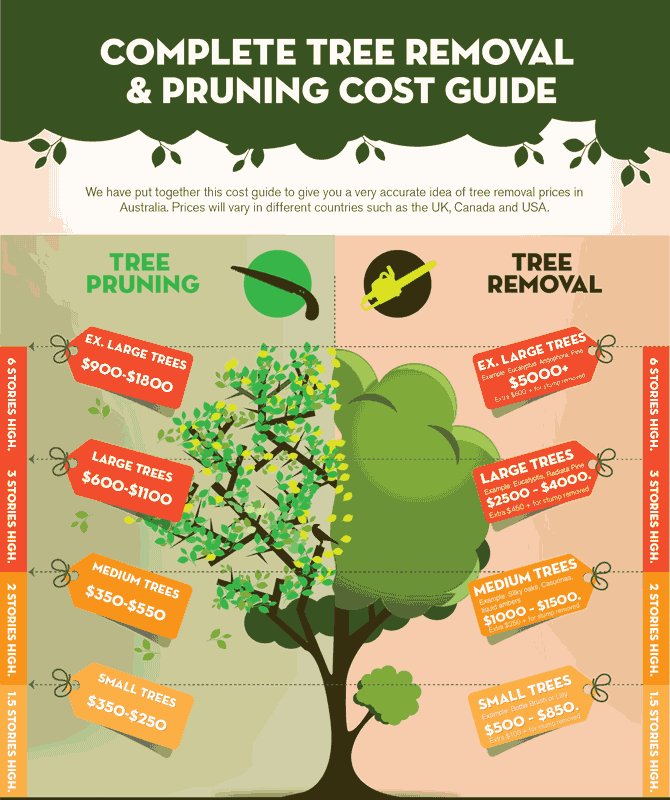Indicators That It Is Required To Get Rid Of A Tree - A Manual For Property Owners
Indicators That It Is Required To Get Rid Of A Tree - A Manual For Property Owners
Blog Article
Article Produced By-Rollins Lucas
Trees include beauty and value to building, yet they can additionally position a risk throughout extreme weather occasions. If a tree has actually stopped expanding, is showing visible fungal growth, or has a leaning trunk, it needs to be eliminated by an expert to avoid residential property damage and injury.
To get more information, participate in a house owner source fair co-hosted by HPD, the Facility for NYC Neighborhoods, and Brooklyn-based housing companions this evening in Bedford-Stuyvesant. The occasion will certainly include the Homeowner Handbook, a brand-new overview to assist house owners browse the duties of owning a home.
1. Dead or Perishing Branches
Trees are an indispensable part of your home's landscape, supplying color and appeal. They also offer shelter for wild animals and create oxygen, however even healthy and balanced trees can experience health problems that may demand their elimination. Dead or passing away trees aren't just unsightly, they can be harmful. Their branches might fall during a storm, bring about pricey property damages and injuries.
When a tree's branches start to die, it means that its framework is starting to break down. If most of its branches are dead, it is most likely time to remove it.
please click the next website page of new development, bark peeling, open wounds or cavities, fungi growing on the trunk or origins and a basic look of decay in the whole canopy. These indications of infection can show a significant trouble that will certainly call for professional tree solutions to fix.
2. Leaning Trunk
While it's normal for trees to lean once in a while as a result of phototropism, if a tree has a harmful or extreme lean that's not because of natural processes - maybe an indicator that the tree requires to be gotten rid of. If the tree is leaning toward a power line, home, automobile, play structure or any other area that could be unsafe to people if it falls, then contacting an expert tree solution for elimination must be a leading priority.
It's also vital to expect any type of sudden changes in a tree's leaning as it can show damages to the roots or trunk that might result in falling. This is specifically true throughout stormy weather, because high winds and rain-soaked soil can cause a lean to change rapidly. Routine surveillance, particularly throughout and after tornados can help property owners recognize potential troubles with their trees so they can call an arborist for a detailed evaluation.
3. https://burningastumpoutofthegrou95172.aboutyoublog.com/30479068/why-it-s-crucial-to-use-a-licensed-arborist-for-tree-elimination , such as wood-boring insects like emerald ash borer or sap-suckers like range pests, are so severe that they can create a tree to pass away. The best way to prevent pest infestation is to check your trees often. Try to find spots, openings, or stainings in the fallen leaves and bark. Take american tree service at the trunk for splits and signs of insect damages, such as tunnels or tracks.
If a tree becomes too plagued with pests, or is close to a home or power lines, an arborist might recommend removal. If a leaning tree develops a new, unstable lean, an arborist will likely suggest elimination as well to make certain the safety of individuals and home. If a weakened or dead tree constantly drops extreme branches, it is an indication that it is time to remove the tree. If a tree continues to drop branches for an extensive period of time, it can bring about architectural issues and potential building damages.
4. hedge trimming auckland prices are a stunning and vital part of our landscape, however they do require routine care to keep them healthy and balanced and secure. If a tree is harmed beyond repair it is likely time for it ahead down.
Search for indications of damages to the trunk, consisting of vertical fractures, joints, dead branch stubs, visible injuries or open cavities and serious tree-rot. The presence of fungis at the base of the trunk is an additional warning sign. Fungi may suggest that the phloem and xylem (life-support tissues) are compromised, allowing for the spread of disease or a future failure.
Likewise, think about whether the tree has actually quit expanding. Healthy trees will have brand-new development annually, which may be visible as buds or branches sprouting and expanding. If you do not see any type of brand-new development, it's a good idea to have an arborist assess the tree and follow their referral for elimination. A dying or harmed tree can drop and trigger home damage.